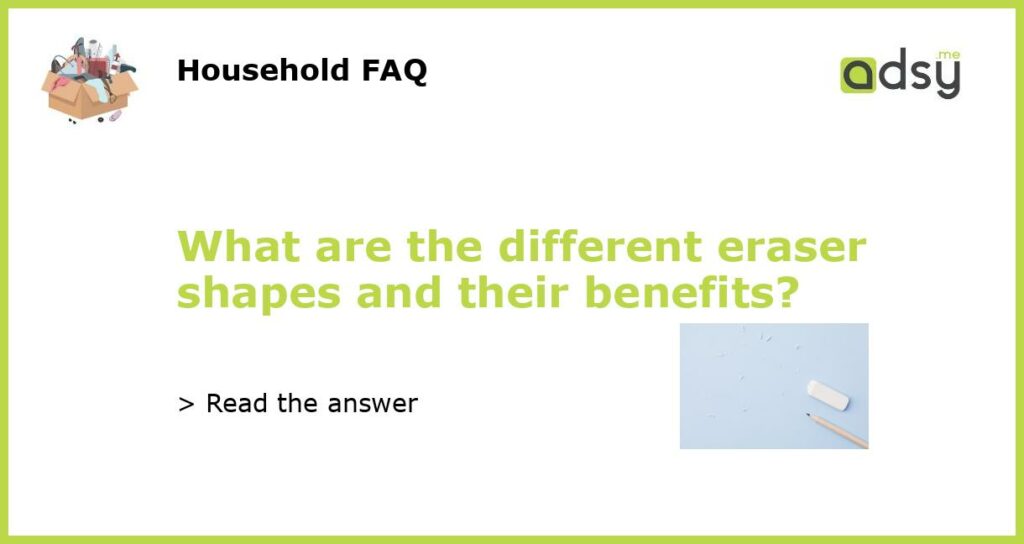The Different Eraser Shapes and Their Benefits
Erasing mistakes is a crucial part of the writing and drawing process. Whether you’re a student, an artist, or someone who simply enjoys writing, having the right eraser can make a significant difference in the quality of your work. Erasers come in a variety of shapes, each with its own unique set of benefits. In this article, we will explore the different eraser shapes available and explain their advantages.
Rectangular Erasers
Rectangular erasers are quite common and widely used by students and professionals alike. They are usually large, with dimensions that are similar to a standard pencil. This shape allows for comfortable grip and easy control, making it ideal for precise erasing tasks. Rectangular erasers are perfect for erasing small areas or details because their sharp edges allow for greater accuracy. They are especially useful for erasing thin lines or when working with technical drawings. Additionally, the large surface area of rectangular erasers means that they last longer, reducing the need for frequent replacements.
Round Erasers
Round erasers, as the name suggests, have a circular shape. They are popular due to their versatility and ease of use. The rounded edges of these erasers allow for smooth, effortless erasing, making them suitable for large areas. They are also great for erasing pencil marks from scanned documents or photocopies. The soft texture of round erasers ensures that they do not damage the paper, which is particularly beneficial when working with delicate or thin paper. The compact size of round erasers makes them a convenient choice for carrying in pencil cases or pockets.
Wedge Erasers
Wedge erasers, also known as triangular erasers, have a unique shape that sets them apart from other erasers. They are triangular in shape, with one pointed end and two flat sides. This design allows for fine erasing control, making them ideal for erasing precise lines or correcting mistakes in detailed illustrations. The pointed end of the wedge eraser is useful for erasing small spaces, while the flat sides are perfect for larger areas. Since they are often made of soft rubber, wedge erasers leave minimal residue behind after erasing, resulting in cleaner, neater work.
Gum Erasers
Gum erasers, also known as kneaded erasers, have a distinct texture and feel compared to other erasers. They are pliable and can be molded into different shapes, making them versatile for various erasing tasks. Gum erasers are particularly useful for removing charcoal, graphite, or pastel marks without smudging the surrounding area. They do not leave any debris or eraser shavings behind, which is advantageous when working with sensitive materials. Gum erasers can be shaped into a fine point for erasing small details or lightly pressed for broader erasing, providing flexibility and precision.
Pen-Style Erasers
Pen-style erasers resemble a pen or mechanical pencil. They have a thin, elongated shape and are usually used for erasing small areas or corrections. The pen-style design offers ergonomic benefits, allowing for better grip and control. These erasers are commonly used for precision erasing in technical drawings, architectural plans, or intricate illustrations. Pen-style erasers are refillable, meaning you can replace the eraser tips when they wear out, making them cost-effective in the long run. The slim size of these erasers also makes them portable and easy to carry around.
In conclusion, the right eraser shape can significantly improve your erasing experience. Rectangular erasers are precise and long-lasting, while round erasers are versatile and gentle on paper. Wedge erasers offer fine control, and gum erasers are versatile and residue-free. Lastly, pen-style erasers are perfect for precision work and can be refilled. Consider your specific needs and preferences when choosing an eraser shape, as it can greatly impact the quality of your work.






